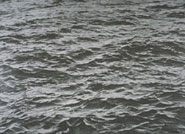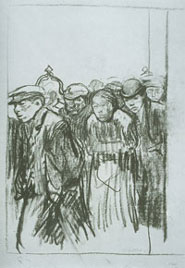|
| What is "Texture"? |
|
 |
Texture is the art element that describes surface characteristics. It references the physical qualities that engage the viewer either
|
Perceptually |
i.e., visual, mind's eye cognition objective, imaginary, or emotional |
|
Or
|
|
|
Literally |
i.e., the participant's hand/sense of touch |
Visual texture is an apparent or simulated surface, read by the eyes
Tactile texture is actual and touchable, as with a surface
|
|
 |
|
Value in waves
|
|
| What does Texture do? |
|
. |
Texture references how an artwork is made. It can relate both to the artist's hands-on making methods and additionally to the artist's physical selection of hand-picked materials.
OR
Texture can refer to how, as by what tactile methods, an object is crafted. In addition, atexture can also describe the materials from which the art is made.
Another way of thinking of these "con-textural" relationships is--
|
Texture can "worked" as in the description of the inventive physical manipulation by the maker for creative aesthetic purpose.
OR
Texture can be natural or "found" as in the resources of the materials/goods selected (for example, sand or a discarded piece of cloth) by the artist.
|
People will tend to make associative links with between:
|
Texture and its "emotional or sensual tug" on human life experiences
e.g., delicate touch, soft skin, hard muscle
Texture and its physical sruface connection with objects in human contact
e.g., fresh-cut grass, dry, brittle hair, smooth, glowing faces
|
Regardless of whether subtle or strong, texture serves as an attention-getting element because it evokes substantial, tangible and discernible responses from human viewers.
|
|
 |
|
Kollwitz
|
|
|
|
|
 |
|
|
|
|


